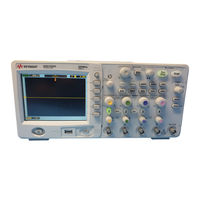Keysight DSO1024A Manuals
Manuals and User Guides for Keysight DSO1024A. We have 1 Keysight DSO1024A manual available for free PDF download: User Manual
Keysight DSO1024A User Manual (156 pages)
Brand: Keysight
|
Category: Test Equipment
|
Size: 1 MB
Table of Contents
Advertisement
